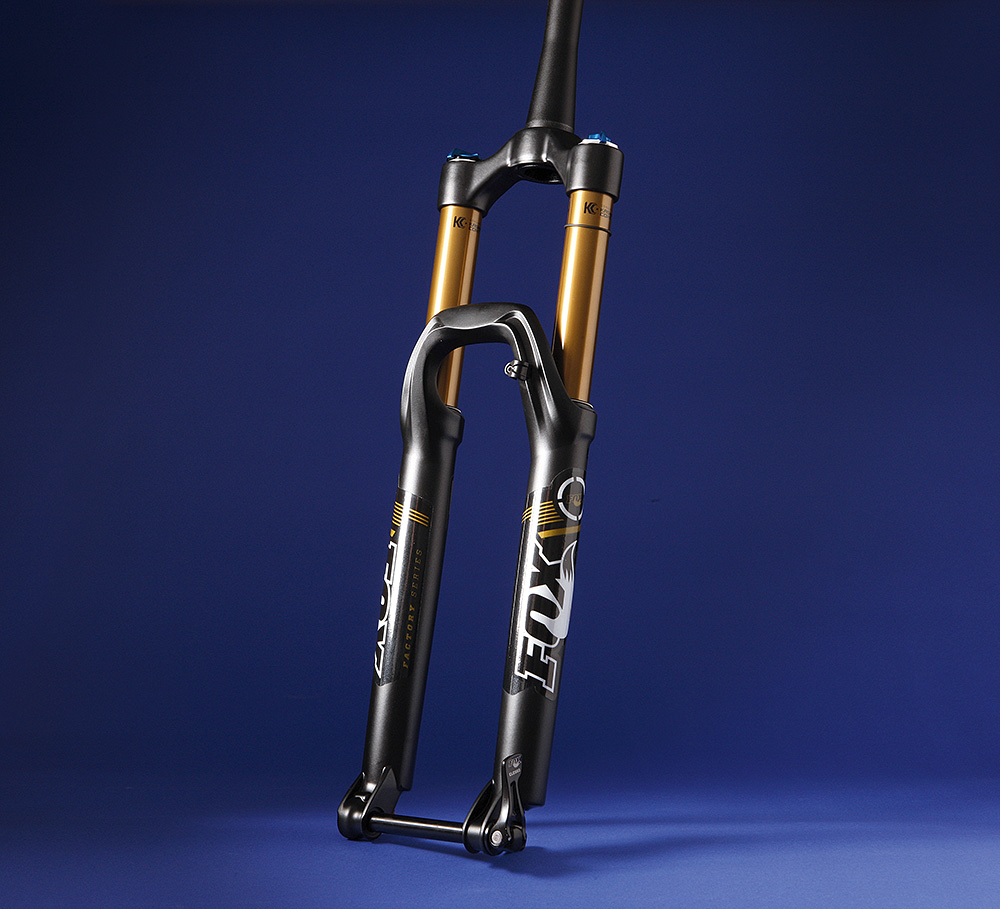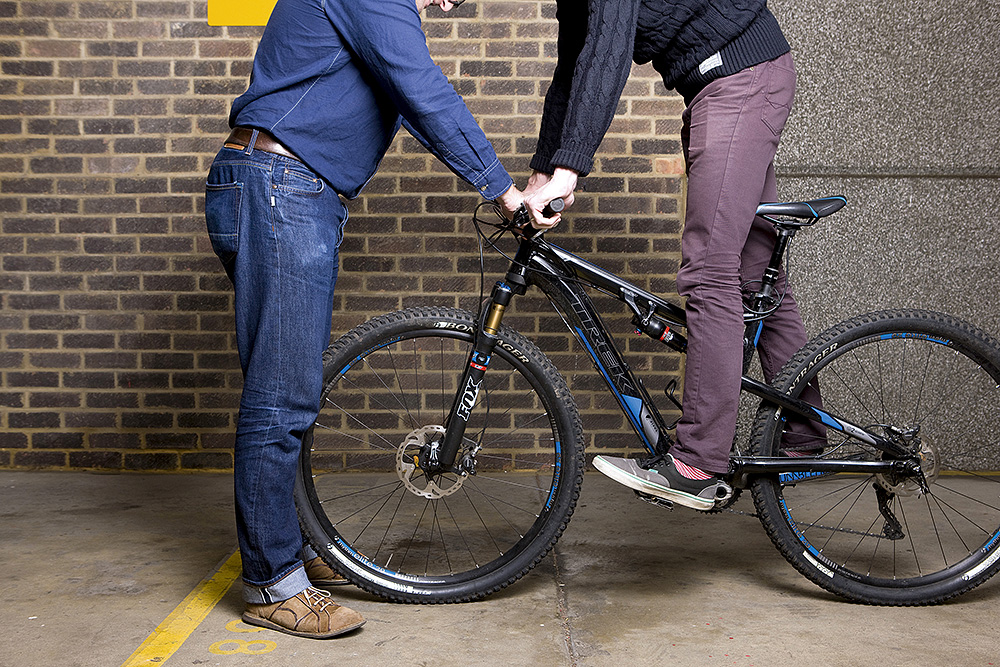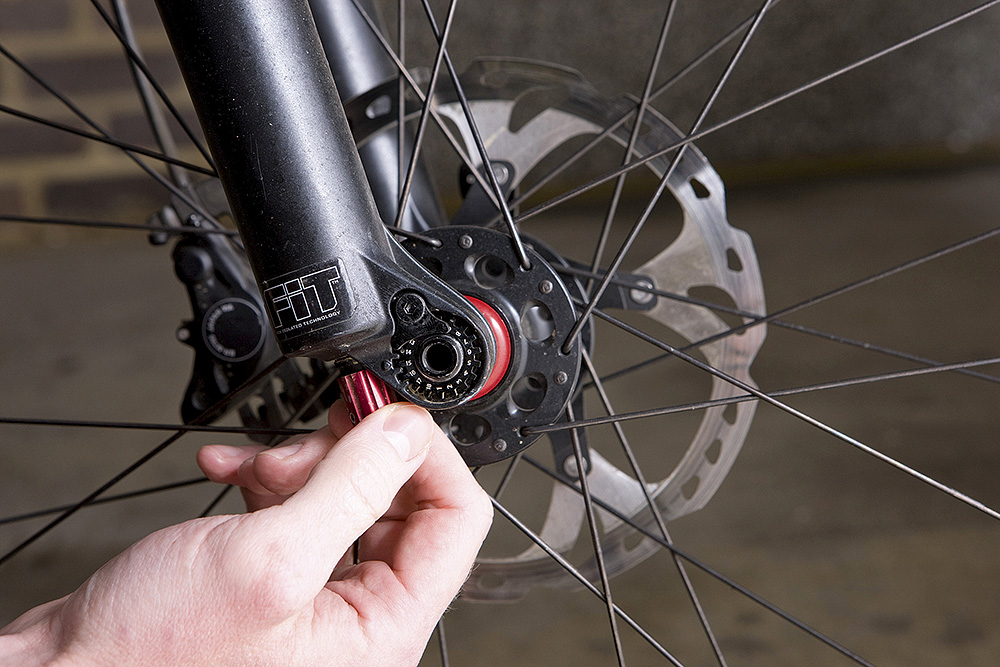Got an old Fox fork you’re not happy with? Chris Porter from Mojo shows you how to boost its performance
DIY options
Check the stiction, £free
Stand on the pedals in the ‘attack’ position. Get a friend to push the fork into its travel, then release and let it settle back to sag. Slide the O-ring down onto the seal, and then have the friend lift the front end of the bike a few centimetres, release and let it settle back down into the sag position. The difference between the ‘settle up’ and ‘settle down’ positions is now visible as a measurement between the seal and the O-ring. Anything more than a few millimetres and you have too much stiction. Clean and grease the seals or service the fork to get a smooth movement. Watch our DIY video here. Then set the sag to 25 per cent using the same attack position.
Set the rebound, £free
Hop on in the car park and smash the bike into the ground to get as much travel as possible. Don’t absorb the rebound stroke (as you would trying to stop on a trampoline), instead try to keep arms and legs straight and feel how quickly the fork returns. You need the rebound to be fast enough to recover past the sag point and settle back down just once. If you get more than one oscillation you need to slow the rebound. If the fork doesn’t recover past the sag point, or feels sluggish to the sag point, the rebound is too slow. Dial in more or less on the red rebound dial.
New lube and service, £53-£100
Has your fork seen over a year of (ab)use? The seals are probably dry and the fork in need of a strip-down, fresh dust seals and new gold lubricating oil. Get a maintenance kit from Mojo and follow our video, po.st/FoxFitService.
While you’ve got the fork pulled apart you can also tinker with optional extras. Increase the travel in your fork by fitting a longer spring assembly, or just raise the front of the bike up by fitting a shorter shuttle bumper.
Get the pros in
Now you’ve tinkered at home, ride the fork again to see if your problems are over. Still not supportive enough? Time to get some professional help and send it in to Mojo…
Build in more mid-stroke, £100
Loading the bike into berms and downhill corners requires support in the middle of the travel. It’s the element most riders complained about on old 34s, that the fork wasn’t supportive enough on descents in the turns. The solution is to get Mojo to fit a shorter negative spring, that way you come ‘off’ the negative support earlier so you start to build that progressive air spring feel earlier.
Boost the damper, £90
Run the CTD lever in Descend mode and the fork uses too much travel: flip it to Trail and it’s too harsh: Sound familiar? You can get Mojo to fit RAD valving (like the pros use) to your current damper for £90 (including service) that should solve the problem and offer more support in Descend mode. There are different levels of firmness, from race
to comfort, in all wheel sizes.
Belt and braces £225
All of the above. If your fork is coming up for a service this package
is probably the one to go for as it includes the shorter negative spring for mid-stroke support and the RAD valves, as well as a full service and oil change.









